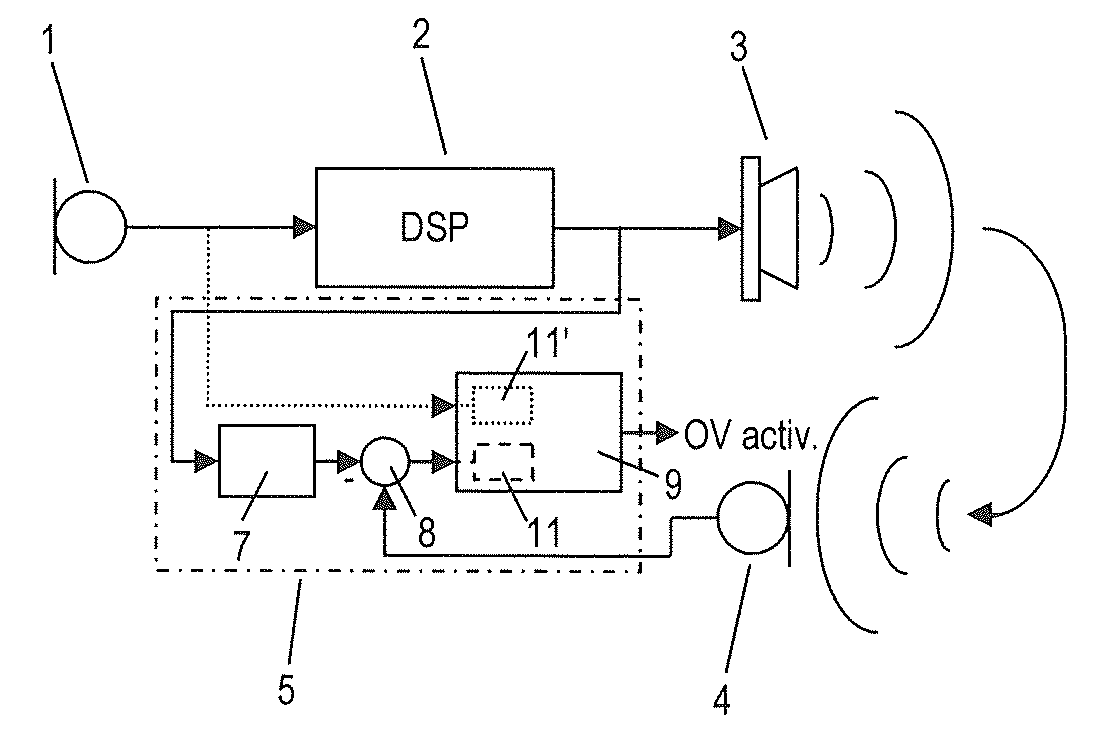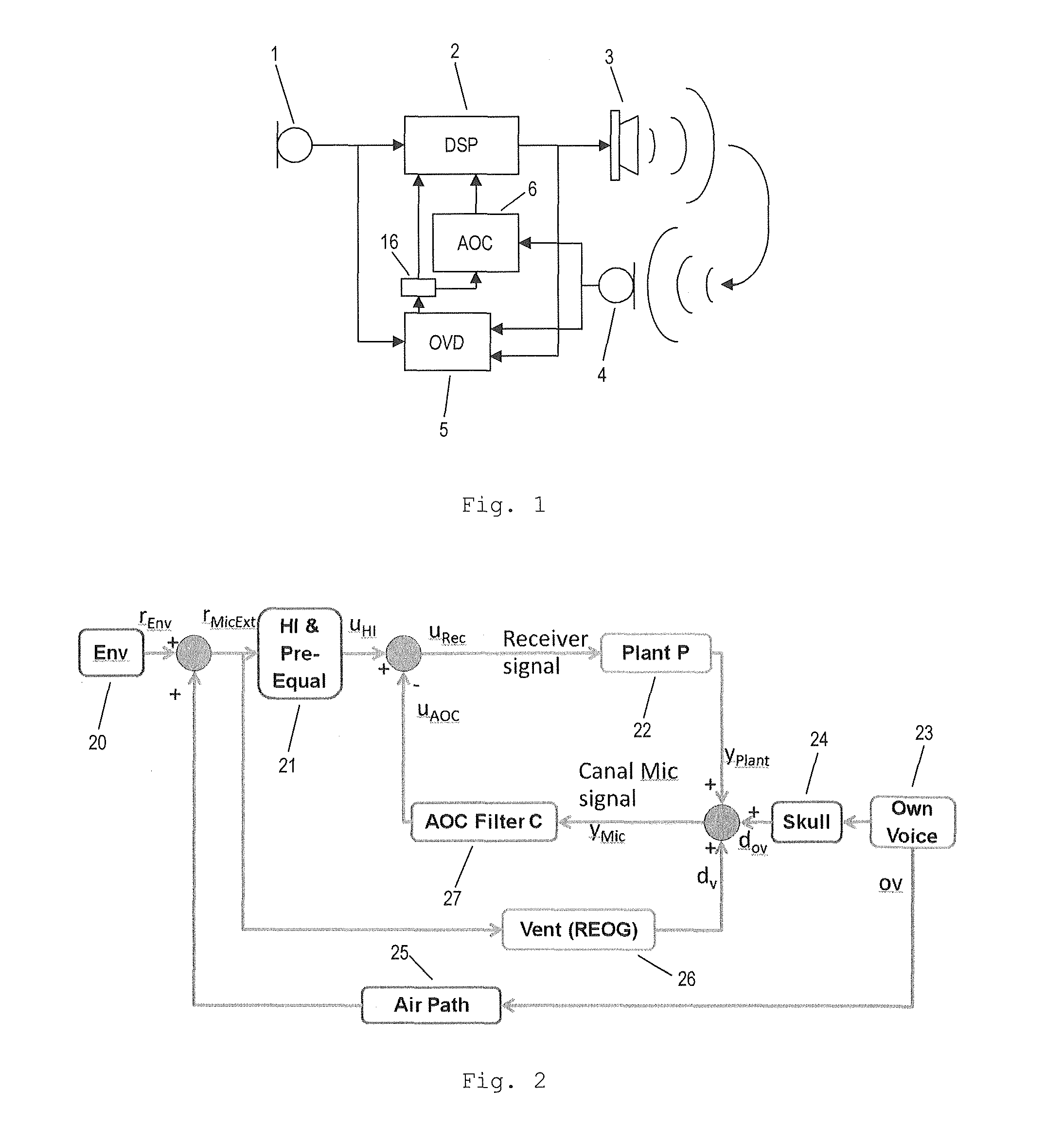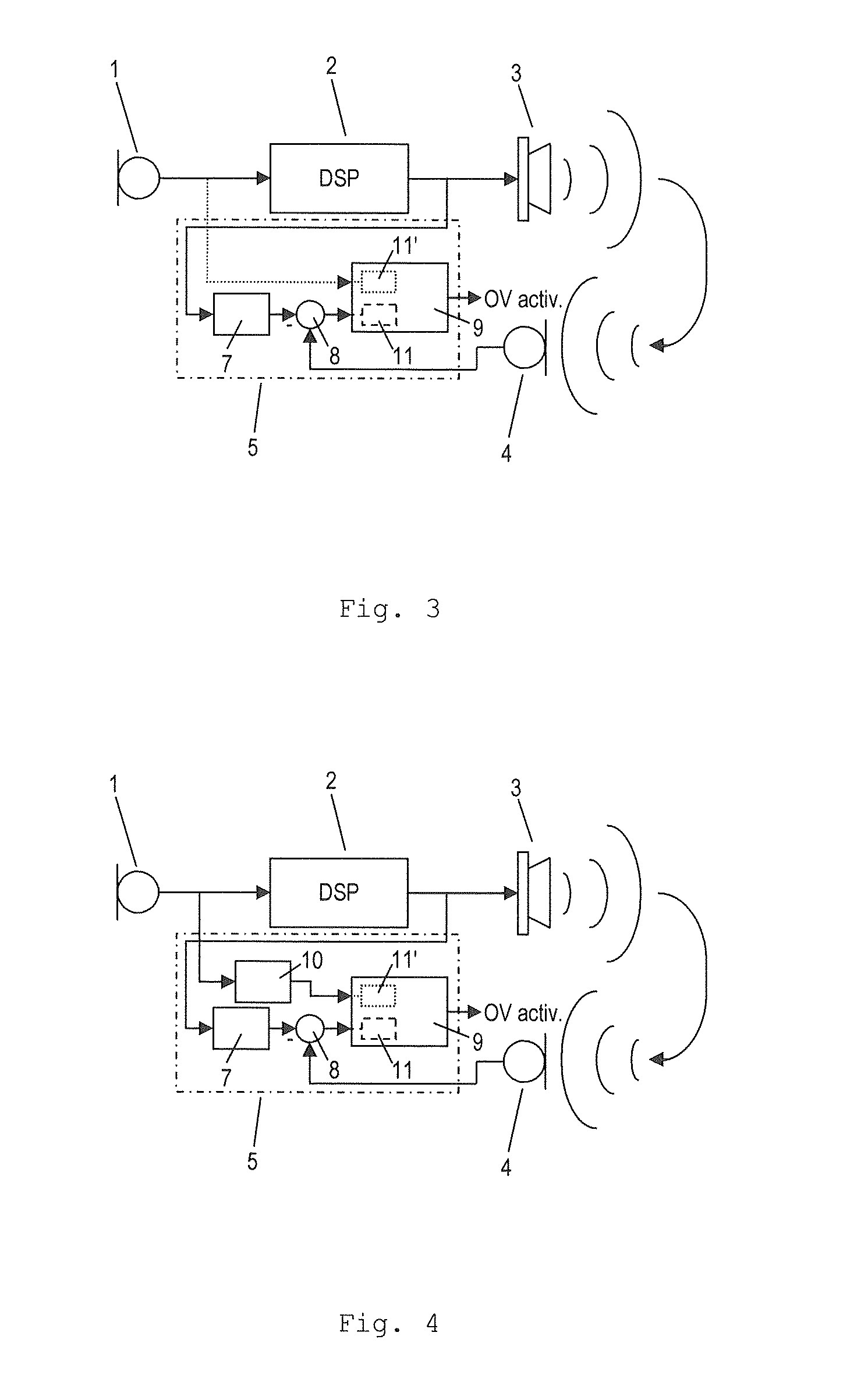Method for operating a hearing device and a hearing device
a hearing device and a technology for operating devices, applied in the direction of occlusion effect electronic compensation, electrical equipment, hearing device energy consumption reduction, etc., can solve the problems of poor degree of reliable own voice detection, rather complex signal analysis, and the sound of their own voice is too loud. , to achieve the effect of reliable and simple manner
- Summary
- Abstract
- Description
- Claims
- Application Information
AI Technical Summary
Benefits of technology
Problems solved by technology
Method used
Image
Examples
Embodiment Construction
[0078]Depending on the application a hearing device is intended for, either an “open” or a “closed” fitting is employed. In the former case sound is delivered to the ear drum of the user both directly, i.e. by-passing the hearing device, as well as for instance via a thin tube extending into the ear canal conveying sound that has been processed, e.g. amplified, by the hearing device. In this way it is possible to maintain the user's voice sounding natural for the user himself, however only relatively mild amplification can be applied, otherwise feedback whistling will occur. On the other hand, when high levels of amplification are required, e.g. to compensate a severe hearing loss, or a great degree of ambient sound attenuation is desired, e.g. for a hearing protection device, a closed fitting is necessary, where the ear canal is essentially sealed-off, i.e. very little direct sound reaches the ear drum. This has the disadvantage of causing the so-called “occlusion effect”, which oc...
PUM
 Login to View More
Login to View More Abstract
Description
Claims
Application Information
 Login to View More
Login to View More - R&D
- Intellectual Property
- Life Sciences
- Materials
- Tech Scout
- Unparalleled Data Quality
- Higher Quality Content
- 60% Fewer Hallucinations
Browse by: Latest US Patents, China's latest patents, Technical Efficacy Thesaurus, Application Domain, Technology Topic, Popular Technical Reports.
© 2025 PatSnap. All rights reserved.Legal|Privacy policy|Modern Slavery Act Transparency Statement|Sitemap|About US| Contact US: help@patsnap.com



